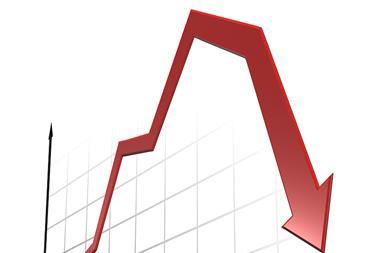Findings of report into the UK personal lines motor insurance market revealed
Aggregator's market share in personal lines motor could grow to around 49% in the next three years, new research has revealed.
The research report into the UK retail motor insurance market by Ernst and Young and the Chartered Insurance Institute explored the actions firms need to take in order to make UK motor insurance profitable for more insurers.
Imran Ahmed, partner in Ernst & Young’s insurance performance improvement practice said: “Our research shows there is not one single thing that will bring about an improvement in profitability in the UK motor insurance market – but rather a series of critical profit levers that, if flexed correctly, will combine to make a difference.
"In order to succeed in this market going forward, insurer’s capabilities need to change. In particular, insurers need to be investing far more in their people and technology to keep up with the demands of rapidly shifting distribution channels.
“There have been seismic shifts in the way people buy motor insurance over the past few years but we expect distribution channels to change further.
"While the industry feels that customers have been the big winners from the current changes, such as the rise of the aggregator – insurers really need to catch up and adapt their profitability and operating models to reflect this new order. Going forward, we see household and small to medium enterprises (SME) insurance as ripe for the kind of changes that have affected motor.”
Unadjusted net combined ratio
The latest figures released on unadjusted net combined ratio for UK based insurers were 122.7% for personal lines motor.
However, while many insurers have a stated aim to make personal motor a profitable class of business, periods of profitability are both brief and rare, the report said.
A consolidating market
In recent years emergence of the aggregator channel has had a significant effect on patterns of distribution.
Personal motor is the single largest class of insurance business with a Gross Written Premium (GWP) of £9.5bon in 2009. It is therefore a critical market for any insurer with aspirations to be a major part of the UK insurance landscape, the report stated.
Alan Woof, chair of the CII Underwriting Faculty said: “The desire to participate in this large revenue pool means that competition among insurers is high, leading to very slim profit margins.
"The insurance market has made almost no money at all from the underwriting of motor insurance in the past 25 years, relying on investment income and sales of ancillary products to create a return on invested capital. In a low margin market, scale is seen as one source of competitive advantage and frequently the largest insurers aggressively defend their market positions.”
The evolution of the aggregator channel
The aggregator channel has brought about a further major shift in patterns of distribution and it is clear that many existing players will be forced to find new models for generating profits, said the report. It added that aggregator sites will "undoubtedly" benefit from the desire for consumers to reduce spending in the current economic environment.
Ahmed said: “Our analysis of primary and secondary research leads us to believe that aggregators will continue to grow and we expect their market share to reach about 49% of the market by 2014.
"There is no question that the advent of aggregators has done a great deal to educate personal motor customers about price and choice of provider. Our interviewees have differing views on their benefit to the industry as a whole; however, they are fairly unanimous in seeing customers as the main beneficiary of the rise of the aggregator.”
Barriers to profitability
Almost half of the senior insurance industry executives interviewed identified weakness in pricing skills as the greatest human barrier to maintaining or enhancing personal motor profitability.
Ahmed added: “This lack of pricing expertise and system capability is hampering the ability to get products to market. Just under 80% identified better risk pricing as the single most critical initiative most likely to improve profitability over the coming three years."






































No comments yet